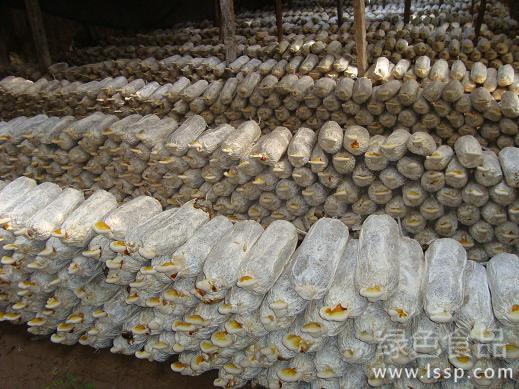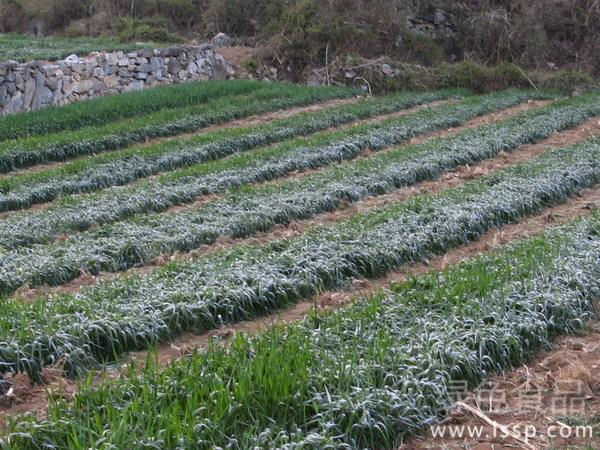Seven Measures to Strengthen Winter Management of Solar Greenhouse

Greenhouse vegetables
In the winter production of solar greenhouse, it is often encountered that continuous cloudy days or rain and snow weather cause insufficient light and low temperature at night, which are easy to cause a variety of diseases and physiological obstacles, resulting in poor product quality, low output and serious economic benefits. In order to solve the above problems, attention should be paid to the following seven aspects in management.
1. Strengthen the measures of heat preservation. Greenhouse mulch should be increased in low temperature weather. Grass curtains or corn stalks can be added around the greenhouse at night, cold-proof ditches can be dug in front of the shed, or a layer of old film can be added to the grass curtain, which can not only keep warm, but also prevent rain and snow from getting wet.
2. Strengthen the management of light. Effective measures should be taken to increase the light time, improve the light intensity and promote the photosynthesis of vegetables. The film surface is often cleaned to improve the light transmittance of the film; under the premise of ensuring the temperature, the grass curtain should be uncovered early and late, and the rolling machine should be installed to shorten the time of rolling curtain and falling curtain, so that vegetables can see early and more light, and increase the accumulation of photosynthates. In case of even cloudy days, when there is no rain and snow, we should also pull up the grass curtain or interval curtain to increase scattered light, and we can also hang a reflective curtain or white on the back wall indoors and install incandescent lamps to make up the light manually.
3. Timely scientific ventilation, cooling and dehumidification. High-efficiency and energy-saving solar greenhouse with good performance in winter, the highest indoor temperature can reach more than 32 ℃ on a sunny day. At this time, the skylight is opened for letting out, because the outside air temperature is low, the temperature difference inside and outside the greenhouse is too large, often it is let out for less than half an hour, and the air temperature has dropped below 25 ℃. At this time, the skylight should be closed to increase the heat storage temperature of the greenhouse. When the indoor temperature rises to about 30 ℃, open the skylight again to let out the wind and drain moisture. This kind of release management should be repeated many times to maintain the indoor temperature at 20-25 ℃ in the afternoon. Due to repeated heating and venting, the water vapor in the greenhouse can be effectively removed, the carbon dioxide gas can be supplemented, the indoor temperature can be maintained within the range of suitable plant humidity, and the development and spread of the disease can be effectively controlled. If only one ventilation and dehumidification is carried out at noon, the humidity and fog in the greenhouse will be heavy the next morning, which will aggravate the occurrence of the disease. It is not suitable to release wind and dehumidification immediately after the greenhouse is unveiled in winter. after the greenhouse is covered with no drip film, due to the low external temperature, a large amount of fog is often seen floating in the greenhouse. If the skylight is opened immediately at this time, the cold air below 0 ℃ of the outside world into the greenhouse will further accelerate the condensation of water vapor, make the fog heavier, and accelerate the infection and spread of the disease. Therefore, in addition to the severe cold season, the solar greenhouse in winter should open the skylight to drain moisture after the opening of the skylight when the lowest temperature is above 0 ℃. General 10~15cm wide small seam for half an hour, you can remove the fog in the greenhouse. At noon, ventilation and dehumidification will be carried out many times, and the water vapor in the greenhouse will be discharged to reduce leaf condensation.
4. Scientific watering and fertilization. It is necessary to coordinate the relationship between watering and increasing ground temperature and reducing indoor humidity, carry out full film mulching, reduce water evaporation and reduce humidity. When watering, you should look at the weather forecast, the soil moisture and the appearance of vegetables. Water in sunny days, but not in cloudy days; in sunny days, in the morning, but not in the afternoon; warm water, not cold water; dark water in ditches under plastic film or drip irrigation. Should be combined with watering formula topdressing, combined with the use of zinc, boron and other micro-fertilizers to enhance disease resistance and disease tolerance. In addition, due to low soil temperature and poor root absorption capacity in winter, foliar fertilizer can be sprayed to supplement plant growth needs. For example, foliar spraying rice vinegar can inhibit bacteria and disinfect insects, and mixed with white sugar and calcium superphosphate can not only play the role of extra-root topdressing, but also increase the sugar content of mesophyll and improve cold resistance.
5. Adjust the plant in time. Fruits and vegetables should be timely hanging vines, pruning, thinning flowers and fruits, improving ventilation and light transmission conditions and nutritional status of vegetables.
6. It is not suitable to uncover the grass for a long time in winter. When the cloudy weather suddenly turns sunny, it is not possible to uncover all the grass at once during the day. It is necessary to adopt "uncovering the flowers", that is, the first day of the year when the weather turns fine, 1/3 will be uncovered first, and 2/3 will be uncovered at 2 p.m., and then all the grass will be uncovered in an hour. The light in the greenhouse increases gradually and the temperature rises slowly, which can avoid flashing seedlings. If the grass is opened all at once after clearing up, the seedlings in the greenhouse suddenly encounter strong light and high temperature, and the amount of transpiration on the leaf surface is large, which exceeds the amount of water absorbed by the roots, which is easy to make the plants wilt and wither and die.
7. timely prevention and control of diseases and insect pests. In winter, fumigant and dust agent should be the main control, spray as little as possible, reduce indoor humidity, in order to control the occurrence and spread of the disease.
Related
- Fuxing push coffee new agricultural production and marketing class: lack of small-scale processing plants
- Jujube rice field leisure farm deep ploughing Yilan for five years to create a space for organic food and play
- Nongyu Farm-A trial of organic papaya for brave women with advanced technology
- Four points for attention in the prevention and control of diseases and insect pests of edible fungi
- How to add nutrient solution to Edible Fungi
- Is there any good way to control edible fungus mites?
- Open Inoculation Technology of Edible Fungi
- Is there any clever way to use fertilizer for edible fungus in winter?
- What agents are used to kill the pathogens of edible fungi in the mushroom shed?
- Rapid drying of Edible Fungi



